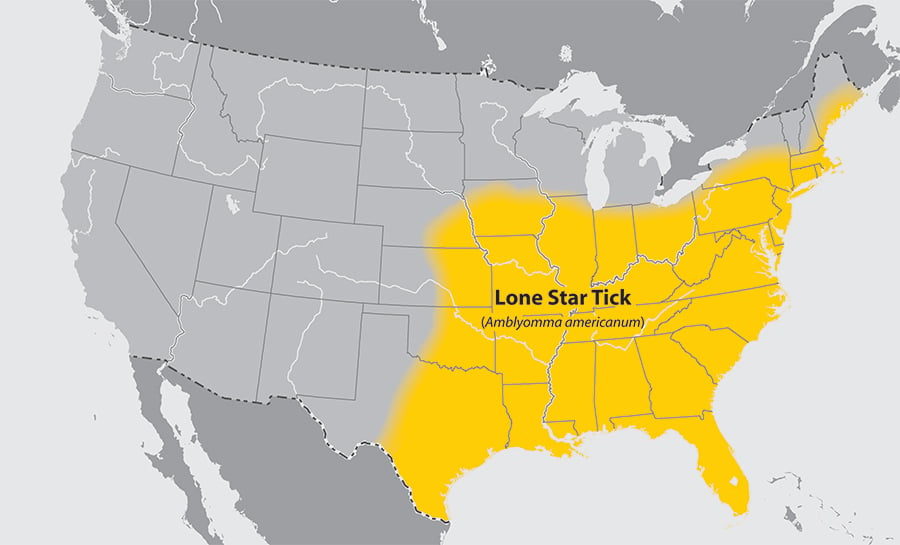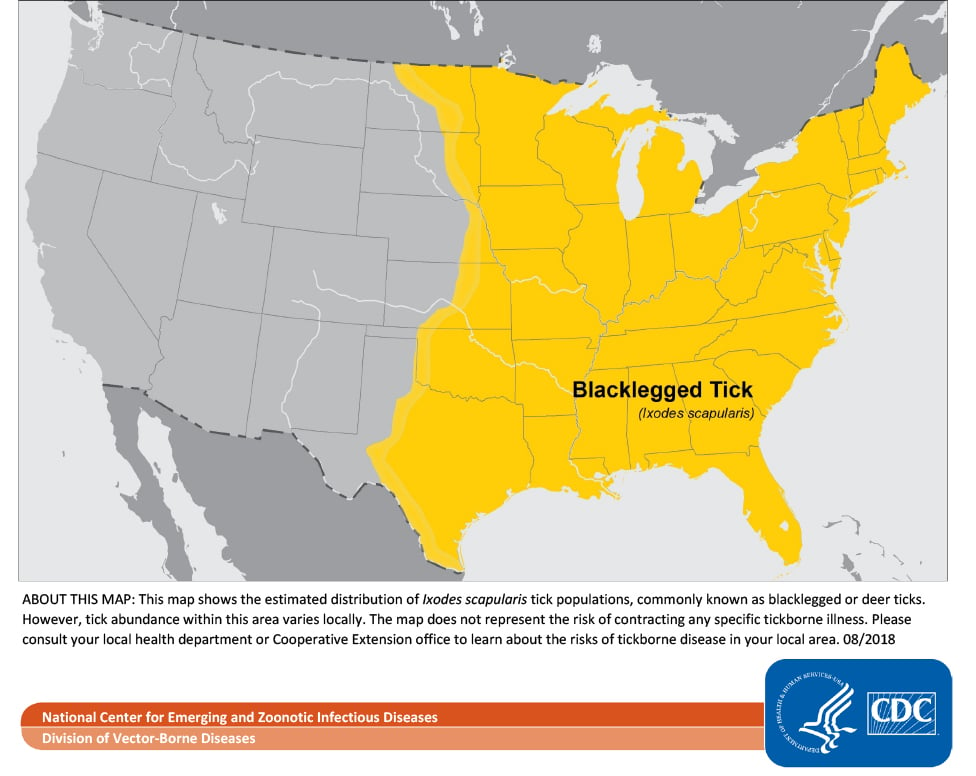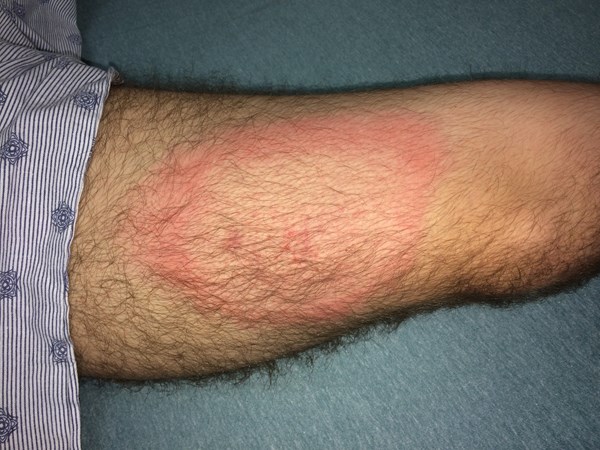A 22-year-old vaccinated male with no past medical history presents to an ED in South Texas with a rash to his right inner thigh for 3 days. He reports the rash started as a large red bump, progressing into a pruritic, ring-like appearance minimally relieved by hydrocortisone.
Review of systems is positive for nausea otherwise without systemic symptoms. He recalls feeling a bite to his inner thigh the day prior to the rash developing but denies seeing any arthropods at that time. He denies camping, hiking, or travel outside of South Texas in the past 6 months, though his apartment complex has woods surrounding it where he frequently walks his dog along the perimeter. He also endorses having indoor/outdoor cats. Physical exam is significant for 12 cm x 15 cm circular erythematous rash with central clearing to right medial thigh. Blanchable, flat, nontender patch. No arthropod present.
What's your diagnosis?
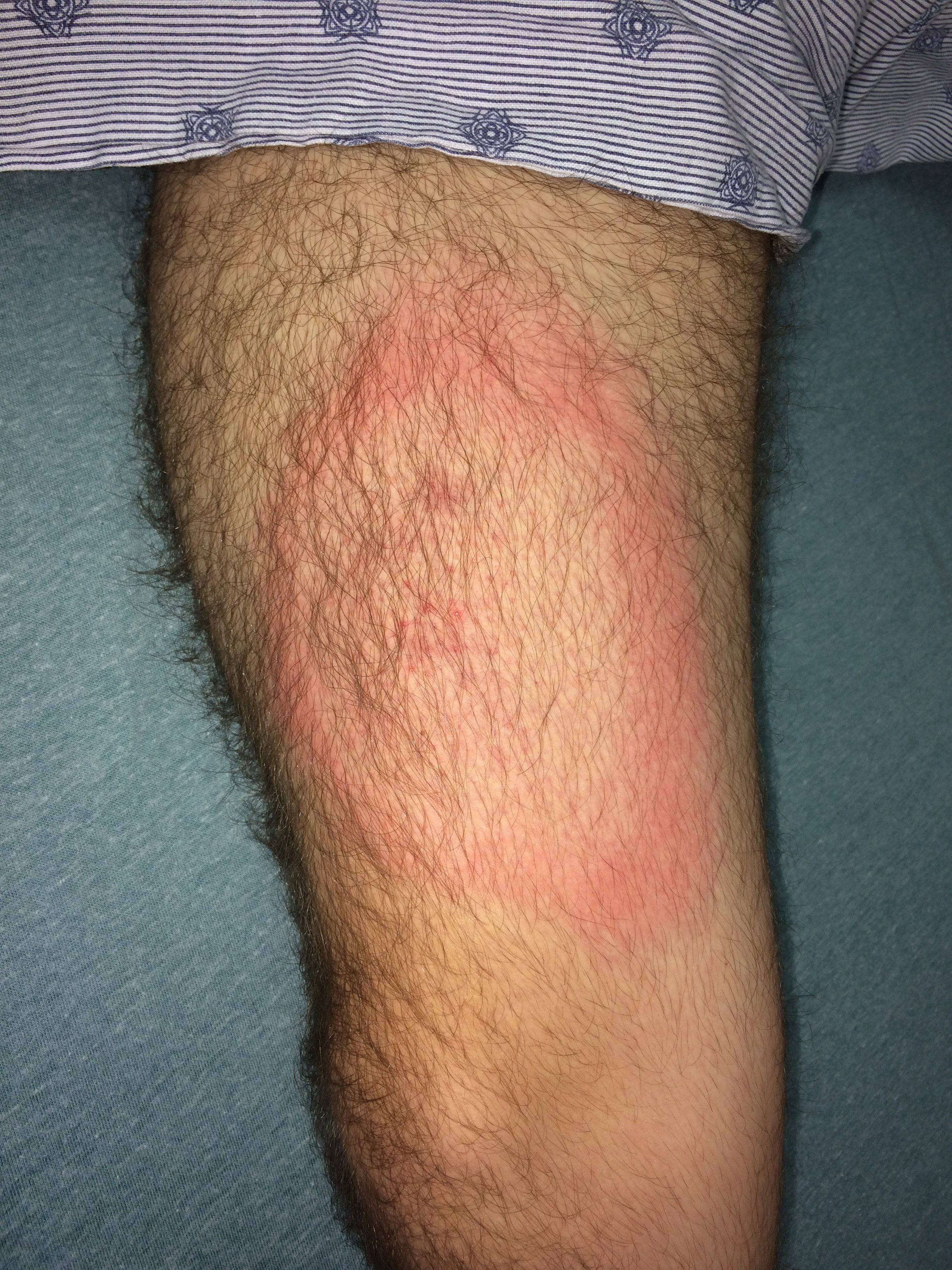
Southern Tick-Associated Rash Illness (STARI)
This is a case of Southern Tick-Associated Rash Illness (STARI), also known as Master's disease, which occurs after the bite of the Lone Star tick, Amblyomma americanum. This tick feeds on humans, cats, dogs, and other animals. The saliva from this tick causes irritation and redness, but the exact cause of the rash is unknown. There is evidence to show the Lone Star tick does not transmit Borrelia burgdorferi, the cause of Lyme disease.
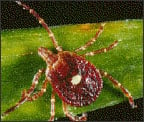
Diagnosis
The clinical presentation includes a bull's-eye lesion (erythema migrans) similar to that of Lyme disease (commonly smaller in size than Lyme disease). Patients may also have systemic symptoms such as fever, fatigue, nausea, headache, myalgias, and arthralgias mimicking Lyme.
Clinical diagnosis based on history of possible tick bite, matching geographic location, and physical exam consistent with bull's eye lesion with or without tick found on exam. Geographic distribution of the Lone Star tick appropriately begins in Texas, spreading as far north as South Dakota and expanding eastward to cover Maine to Florida. Unfortunately, this overlaps heavily with the blacklegged tick or deer tick (Ixodes scapularis), which is Lyme disease vector on the East Coast — making differentiation difficult. There is no widely used specific blood test to confirm diagnosis, and Lyme exclusion is prudent.
Treatment
Patients are often treated with doxycycline because STARI closely resembles Lyme Disease; however, there is no evidence to suggest that antibiotic use speeds recovery in STARI management.
STARI has not been linked with long-term outcomes similar to Lyme disease, and reassurance of prognosis at the time of diagnosis is crucial in preventing downstream mismanagement.
